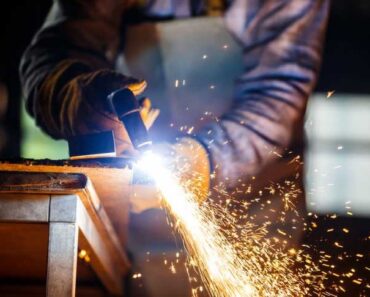Introduction:
In the realm of metalworking and fabrication, the plasma cutter stands out as a versatile and powerful tool. With the ability to slice through a variety of metals with precision and speed, plasma cutters have become indispensable in industries ranging from construction to automotive manufacturing. In this article, we will delve into the mechanics, applications, and benefits of plasma cutters.

Understanding Plasma Cutting:
Plasma cutting is a process that utilizes ionized gas, known as plasma, to cut through conductive materials such as steel, aluminum, and copper. The basic setup involves a power source, a gas supply, and a torch. The power source generates an electric arc that passes through the gas, turning it into plasma. The high temperature and velocity of the plasma allow it to melt and cut through the metal.
Key Components:
- Power Source: The power source is crucial for generating the electrical energy required to initiate and sustain the plasma arc. Modern plasma cutters typically use inverter technology, offering better control and efficiency.
- Gas Supply: The choice of gas influences the cutting process. Common gases include compressed air, nitrogen, and oxygen. Each gas has specific advantages, affecting the quality and speed of the cut.
- Torch: The torch directs the plasma stream onto the material, ensuring precise and controlled cuts. Some advanced torches come with features like CNC (Computer Numerical Control) compatibility for automated cutting.
Applications of Plasma Cutters:
- Metal Fabrication: Plasma cutters excel in cutting intricate shapes and patterns, making them ideal for metal fabrication projects. From creating custom parts to crafting artistic designs, plasma cutters offer unparalleled versatility.
- Construction: In the construction industry, plasma cutters are used for tasks such as cutting metal sheets for roofing, slicing through steel beams, and shaping components for structural projects. Their ability to provide clean and precise cuts enhances efficiency on construction sites.
- Automotive Industry: Plasma cutters play a crucial role in automotive manufacturing, where precision and speed are paramount. They are employed for cutting and shaping metal components in the production of vehicles and their parts.
- DIY and Artistic Endeavors: Hobbyists and artists leverage plasma cutters to bring their creative visions to life. The precision and versatility of these tools allow for the fabrication of intricate metal sculptures, signs, and decorative pieces.
Benefits of Plasma Cutting:
- Precision and Accuracy: Plasma cutters offer exceptional precision, enabling users to create detailed and intricate cuts. This makes them an invaluable tool in industries where accuracy is crucial.
- Speed and Efficiency: Compared to traditional cutting methods, plasma cutters are faster and more efficient. They significantly reduce the time required to complete cutting tasks, boosting overall productivity.
- Versatility: With the ability to cut through a wide range of metals and thicknesses, plasma cutters are versatile tools suitable for diverse applications. This adaptability makes them an essential asset in various industries.
- Reduced Heat-Affected Zone (HAZ): Plasma cutting produces a smaller heat-affected zone, minimizing the impact on the surrounding material. This results in cleaner cuts and reduces the need for additional finishing processes.
Conclusion:
The evolution of plasma cutters has revolutionized metalworking and fabrication processes across industries. From their precision and speed to their versatility and efficiency, these tools have become indispensable in the hands of professionals and hobbyists alike. As technology continues to advance, we can expect further innovations in plasma cutting, enhancing its capabilities and expanding its applications in the ever-evolving world of manufacturing and craftsmanship.




